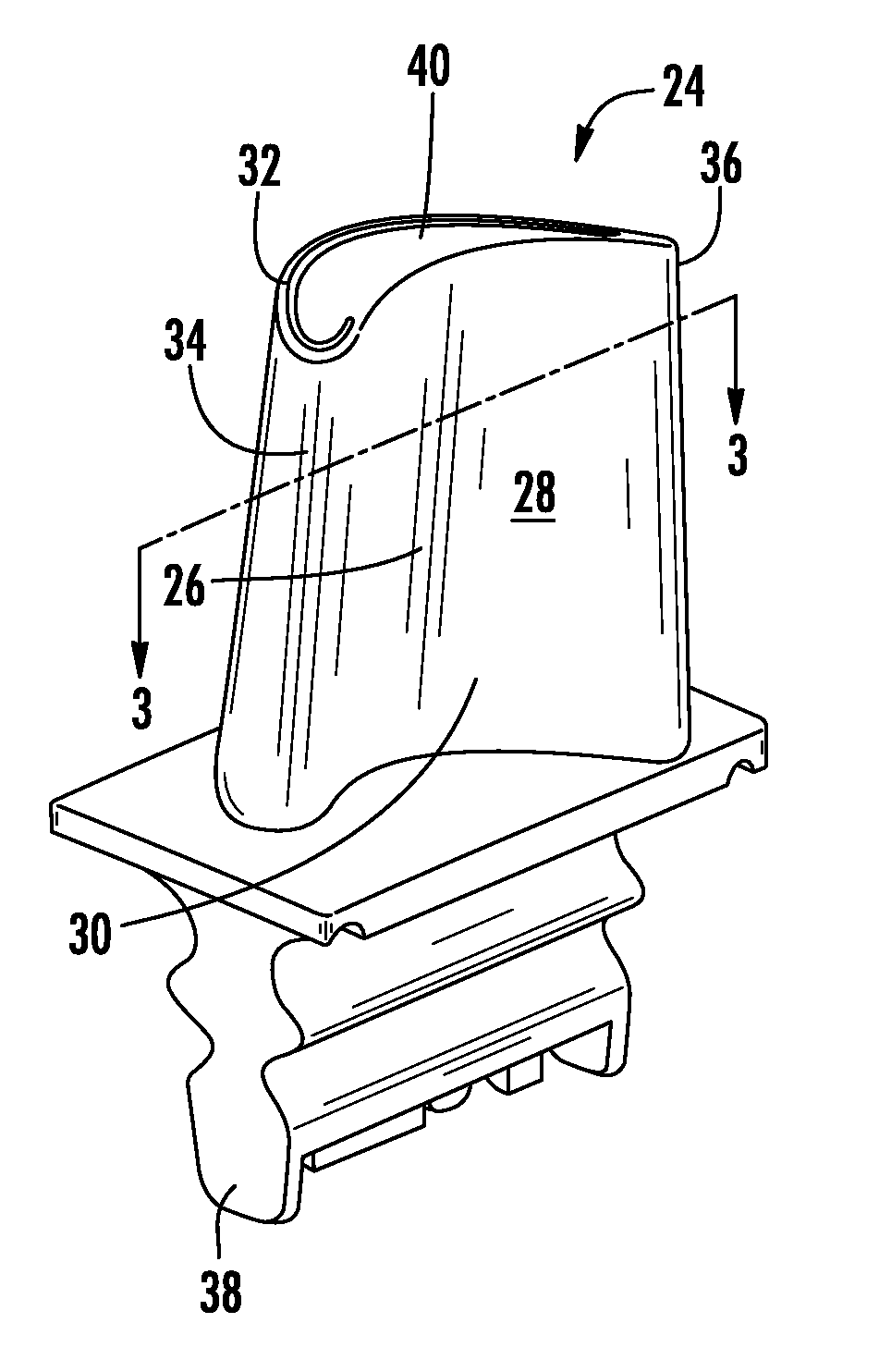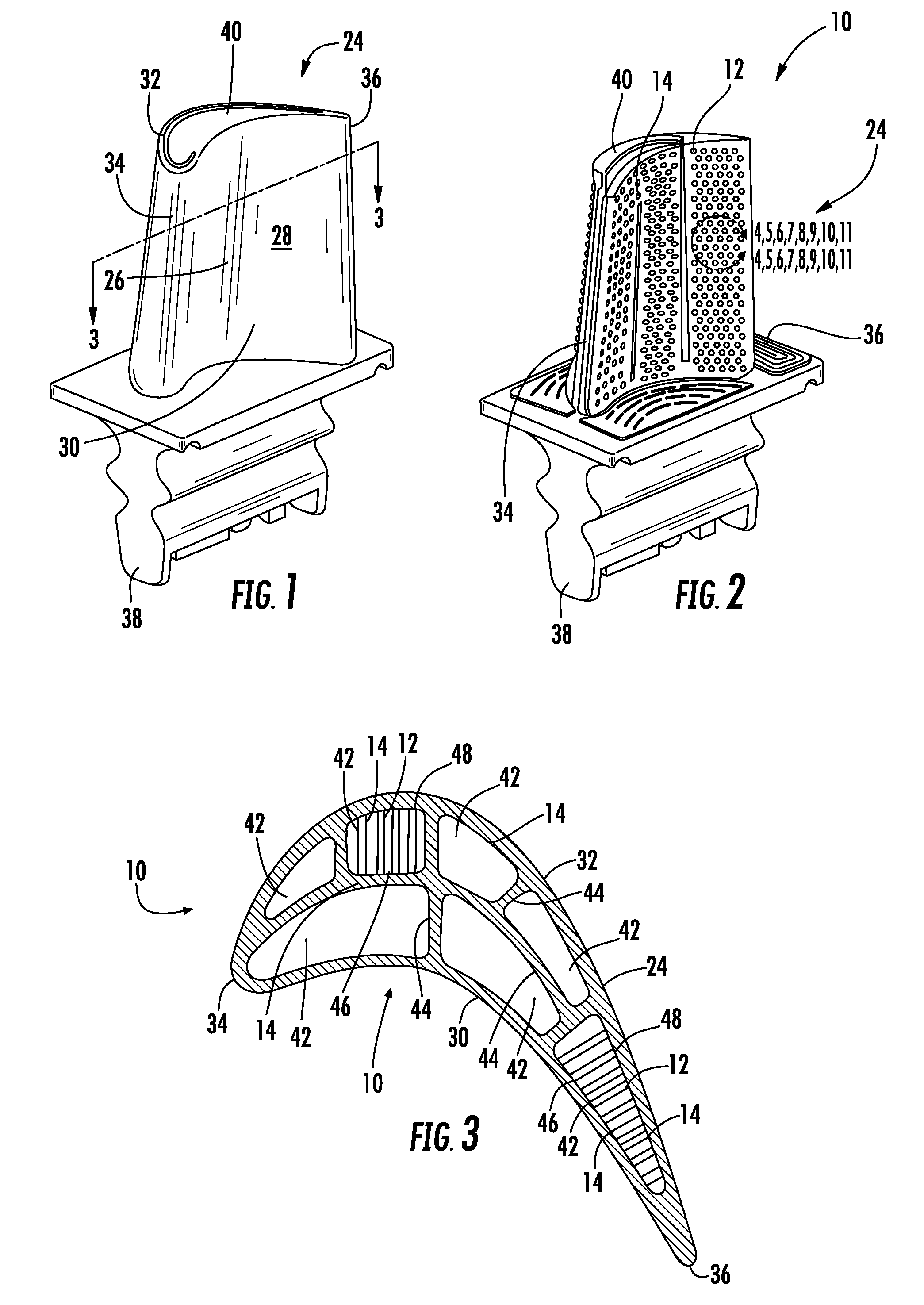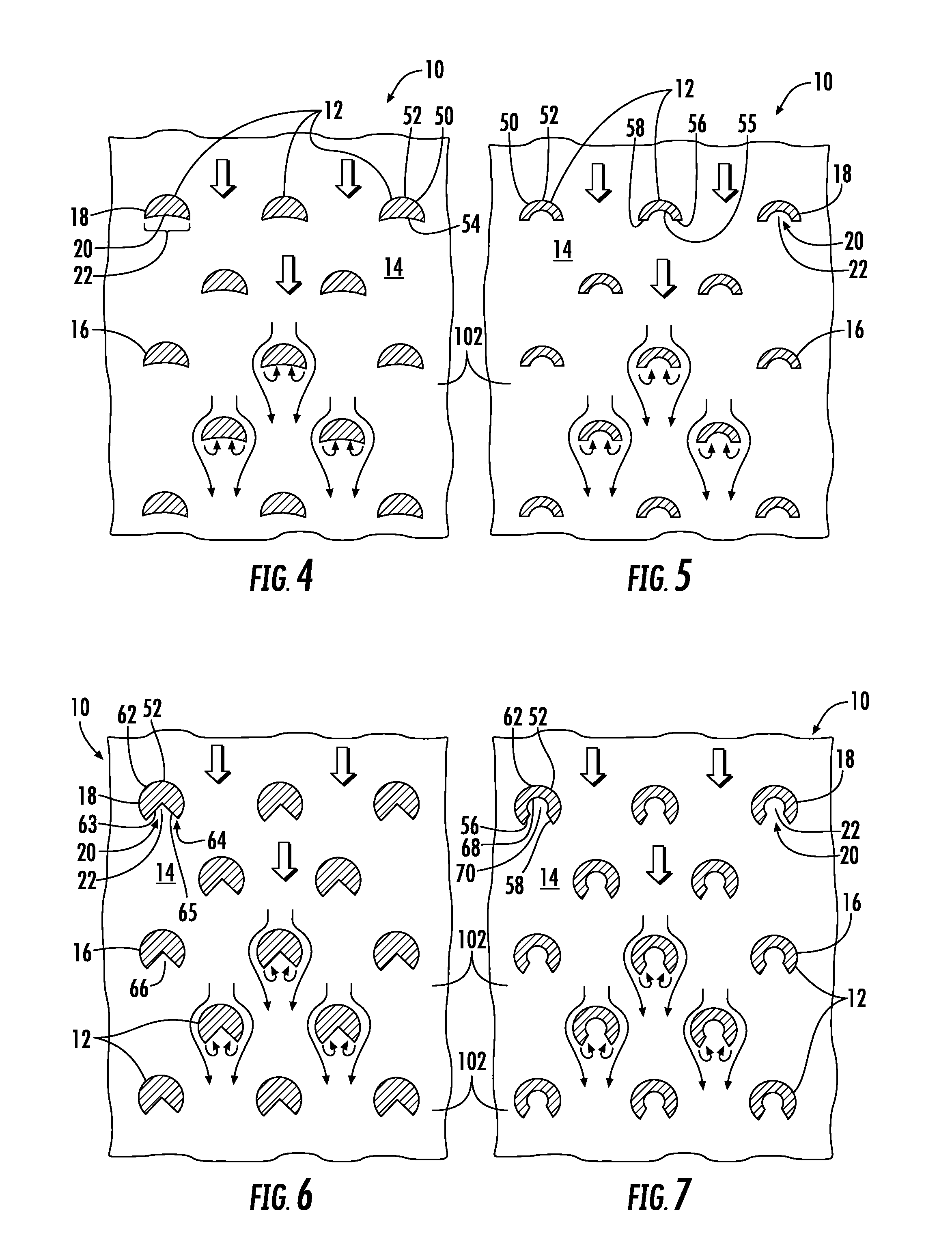Cooling system having reduced mass pin fins for components in a gas turbine engine
- Summary
- Abstract
- Description
- Claims
- Application Information
AI Technical Summary
Benefits of technology
Problems solved by technology
Method used
Image
Examples
Embodiment Construction
[0033]As shown in FIGS. 1-11, this invention is directed to a cooling system 10 having one or more pin fins 12 with reduced mass for a gas turbine engine. The cooling system 10 may include one or more surfaces 14 defining at least a portion of the cooling system 10. The pin fin 12 may extend from the surface 14 defining the cooling system 10 and may have a noncircular cross-section 16 taken generally parallel to the surface 14 and at least part of an outer surface 18 of the cross-section 16 forms at least a quartercircle. A downstream side 20 of the pin fin may have a cavity 22 to reduce mass. The cooling system 10 may be used in various components of a gas turbine engine, such as, but not limited to, a turbine blade 24, a turbine vane, a transition duct and a combustion liner. When used in a turbine blade, the cooling system 10 with reduced mass pin fins 12 generates less centrifugal stresses, thereby creating a more efficient turbine blade 24.
[0034]In one embodiment, the cooling s...
PUM
 Login to View More
Login to View More Abstract
Description
Claims
Application Information
 Login to View More
Login to View More - R&D
- Intellectual Property
- Life Sciences
- Materials
- Tech Scout
- Unparalleled Data Quality
- Higher Quality Content
- 60% Fewer Hallucinations
Browse by: Latest US Patents, China's latest patents, Technical Efficacy Thesaurus, Application Domain, Technology Topic, Popular Technical Reports.
© 2025 PatSnap. All rights reserved.Legal|Privacy policy|Modern Slavery Act Transparency Statement|Sitemap|About US| Contact US: help@patsnap.com



